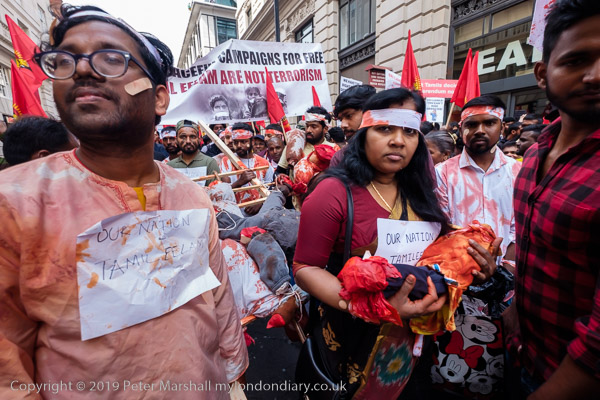
The British colonised Ceylon and in the nineteenth century it was a major source of coffee grown on British owned plantations. When the coffee crops began to fail, efforts were made to replace coffee by tea plants and seeds from Assam in India. Although at first this was unsuccessful, by the end of the nineteenth century tea had replaced coffee as the major export crop.
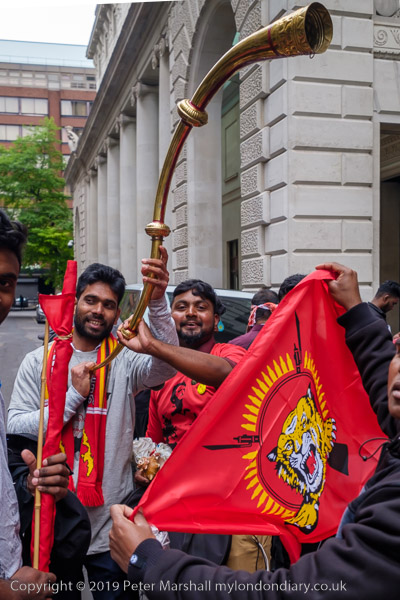
Sri Lankan Tamils had lived in parts of the island since at least around the 2nd century BC, but the tea plantations imported Indian Tamils to the hill areas in large numbers. Following independence in 1948, the Sinhalese-led government deported large numbers of the Indian Tamils and also made life difficult for the Sri Lankan Tamils, severely limiting employment opportunies, suppressing their culture and encouraging anti-Tamil riots, leading to the start of a civil war in 1983.
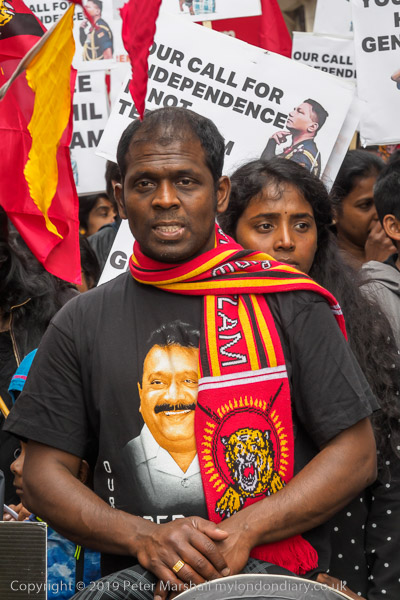
One-third of Sri Lankan Tamils now live outside Sri Lanka, the largest group, around 300,000, being in Canada. There are thought to be between 100,000 and 200,000 British Tamils living in the UK, the figures vague as Tamil was not one of the ethnic groups listed in the UK census, though people could write it in.
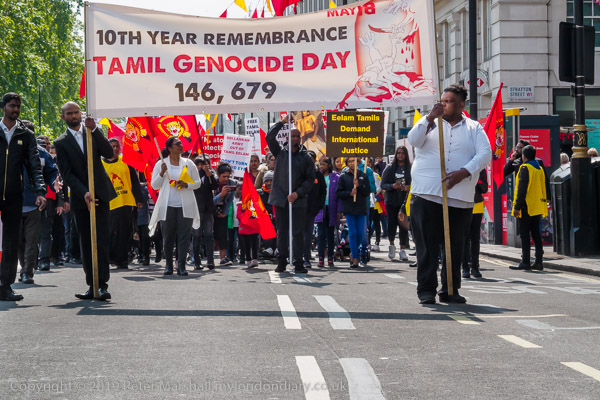
Over 70,000 Tamils are thought to have been killed in the earlier phases of the Sri Lankan Civil war, but it came to a particularly disastrous and bloody end in 2009, on a small strip of land at Mullivaikkal, where 40,000 Tamils, around half of them civilians, are thought to have been killed, mainly by shelling by Sri Lankan government forces in what they had designated as a ‘no-fire’ zone, but some by the Liberation Tigers of Tamil Eelam (LTTE). The numbers are highly disputed, with huge variations between government and Tamil sources, but there is no doubt that it was a massacre on a terrible scale. According to the Tamil Guardian:”
After providing an initial death toll of 40,000, the UN found evidence suggesting that 70,000 were killed. Local census records indicate that at least 146,679 people are unaccounted for and presumed to have been killed during the Sri Lankan military offensive. “
May 18th, the date on which this protest took place is widely marked as Mullivaikkal Genocide Remembrance Day
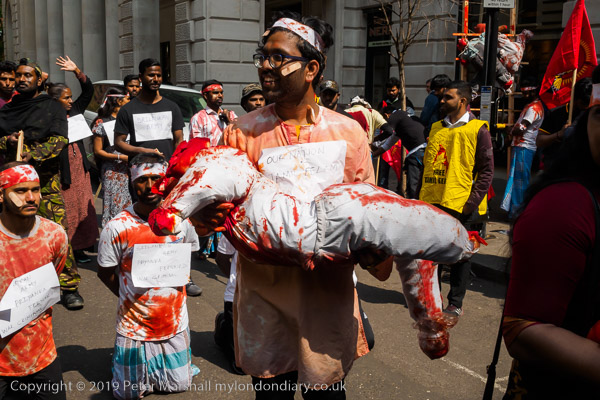
The protest I photographed included some graphic re-enactments of shooting (though only with crude wooden guns) and many people with bandages and fake blood, giving plenty of photographic opportunities. And unsurprisingly, feeling run high. Tamils want Sri Lanka to face prosecutions by the International Criminal Court for war crimes and a referendum in Sri Lanka to lead to the setting up of an independent state, Tamil Eelam.
More on the protest: 10 Years since Mullivaikkal massacre
A week earlier I photographed a group of Tamils at Downing Strike begining a week of hunger strike for their demands:
Tamil Genocide Hunger Strike
All photographs on this and my other sites, unless otherwise stated, are taken by and copyright of Peter Marshall, and are available for reproduction or can be bought as prints.
There are no adverts on this site and it receives no sponsorship, and I like to keep it that way. But it does take a considerable amount of my time and thought, and if you enjoy reading it, please share on social media.
And small donations via Paypal – perhaps the cost of a beer – would be appreciated.